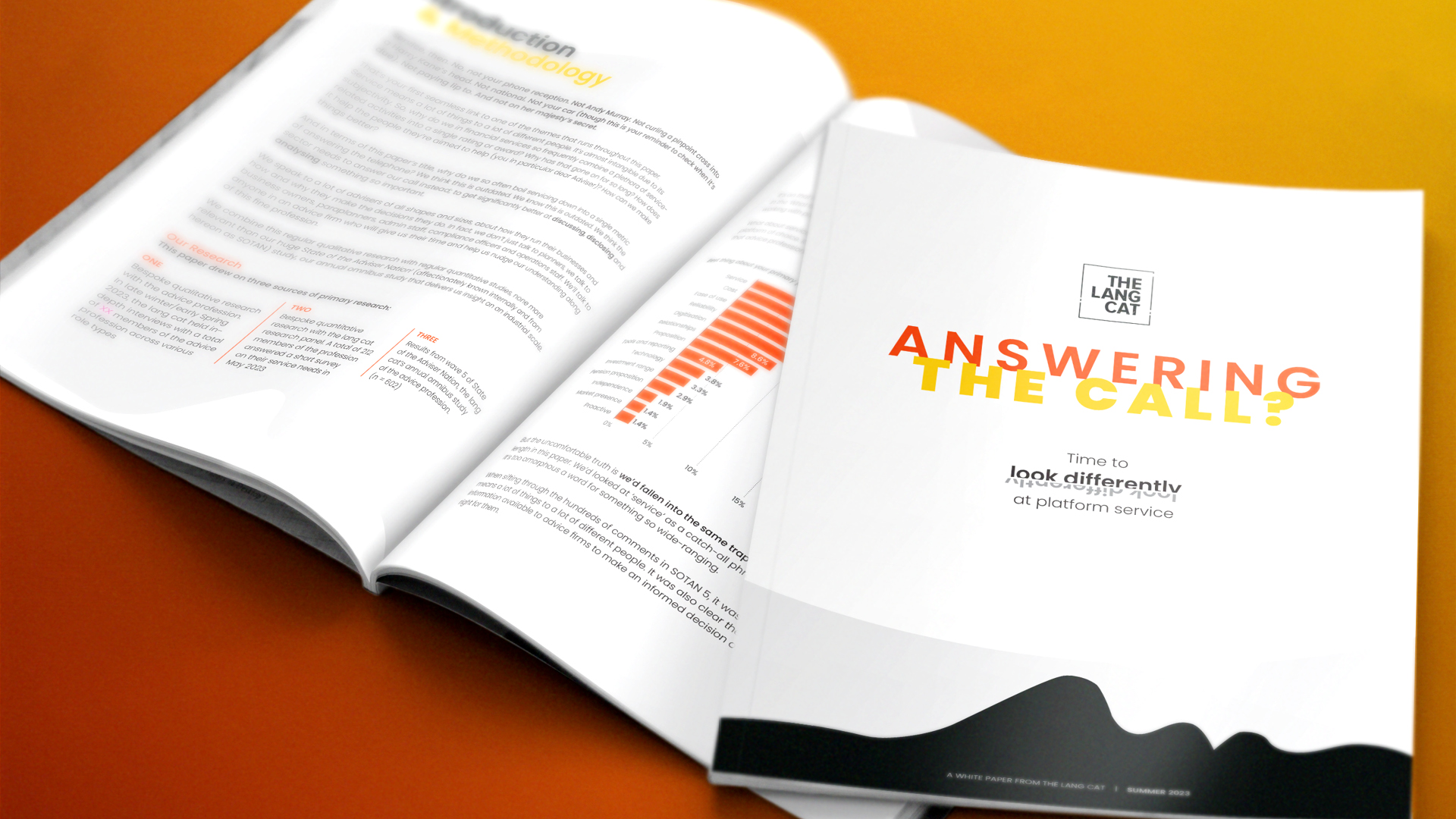As a business which analyses platform pricing, amongst other things, we do have a rich and varied life, we spend a fair bit of time pressuring platforms who have not adequately described what it is they do and why it’s worth what they charge. It’s those platforms which feel the greatest price pressure and which sometimes make some very odd decisions.
It’s with this in mind that we greet Cofunds’ decision to remove its fixed annual charge with a mixed response. On the one hand, it’s good. Cofunds was always a mid-market platform, along with the rest of the big 3. Any scatter chart of client fund values will see a huge amount of £20k pots and a very few Scrooge McDucks bumping the average up (NEVER show interest in platform average AUA figures; it only encourages them). So the introduction of the annual charge was a bit weird, it priced Cofunds out of its heartland, and yet the proposition wasn’t (for all its merits) a Transact or a Nucleus or even a Standard Life or an Elevate. It didn’t have the breadth of wealth management functionality. Stuck in the middle is fine if you’re Stealers Wheel, but not when Vic Vega is shimmying into view with a straight razor.
What we’re really looking for is a narrative when platforms change prices. For Transact’s recent bond change it was that their profitability allows them to start nipping and tucking, that made sense. For Nucleus it was that the market had moved on for portfolios above £500k and they were coming back in line; again profitability allowed them to do that. That made sense too.
But Cofunds’ pricing is already fine, apart from for small portfolios. The narrative in the release is all about the muscle of L&G, which doesn’t make sense to us. Here’s why.
Cofunds made profit in 2012 of £6m. It has (as another platform chief pointed out to us yesterday) 800,000 or so customers. Now, let’s say, conservatively, that 100,000 of those are paying the £40pa charge. We’re no good at arithmetic, no, wait, that’s not true, we’re very good at arithmetic[i] and we can tell you that £40 x 100,000 equals £4m. Cofunds has already said it needs to invest heavily in tech for the post-RDR world, quite understandably. So what’s all this about? Is Cofunds feeling the pinch? Has reaction to the L&G news been that bad? Are they tired of making profit? What’s going on?
Ah well. We may never know. Let’s just get on with the figures.
And when we look at the figures (remember this is just a cut, full analysis will go out to Guide subscribers in the next couple of days) here’s how it all looks against a select few.We’ve deliberately highlighted lower-ish portfolio sizes because the removal of the £40 charge near as dammit doesn’t make a bps difference at the more toppy values.
Here’s how it looks for ISA/GIA:
|
Portfolio size |
£20k |
£50k |
£100k |
£500k |
|
Old Cofunds |
0.49% |
0.37% |
0.33% |
0.26% |
|
New Cofunds |
0.29% |
0.29% |
0.29% |
0.25% |
|
AJ Bell |
0.34% |
0.26% |
0.23% |
0.21% |
|
ATS IFO |
0.60% |
0.24% |
0.12% |
0.02% |
|
Ascentric |
0.67% |
0.36% |
0.29% |
0.26% |
|
Aviva |
0.25% |
0.25% |
0.25% |
0.25% |
|
Elevate 2013 |
0.40% |
0.34% |
0.32% |
0.28% |
|
Nucleus |
0.35% |
0.35% |
0.35% |
0.35% |
|
RJIS |
0.33% |
0.33% |
0.33% |
0.33% |
|
Seven IM |
0.30% |
0.30% |
0.30% |
0.30% |
|
Skandia |
0.50% |
0.43% |
0.39% |
0.32% |
|
Standard Life |
0.40% |
0.40% |
0.40% |
0.32% |
And here’s how it looks for SIPP:
|
Portfolio size |
£20k |
£50k |
£100k |
£500k |
|
Old Cofunds |
1.24% |
0.67% |
0.43% |
0.26% |
|
New Cofunds |
1.04% |
0.59% |
0.39% |
0.25% |
|
AJ Bell |
0.94% |
0.59% |
0.44% |
0.21% |
|
ATS IFO |
1.50% |
0.60% |
0.30% |
0.06% |
|
Ascentric |
1.42% |
0.66% |
0.38% |
0.28% |
|
Aviva |
0.40% |
0.38% |
0.36% |
0.30% |
|
Elevate 2013 |
0.40% |
0.34% |
0.32% |
0.28% |
|
Nucleus |
0.35% |
0.35% |
0.35% |
0.35% |
|
Skandia |
0.50% |
0.42% |
0.39% |
0.32% |
|
Standard Life |
0.60% |
0.60% |
0.60% |
0.55% |
A couple of notes, ATS IFO is Alliance Trust Saving’s inclusive fee option. For AJ Bell and Ascentric we’ve included some trading costs, for we are nothing if not fair.
There’s no doubt that Cofunds is now one of the cheaper options on the market. Apart from Aviva, it must be one of the go-to platforms for smaller portfolios, probably up to £50k or so. That’s for ISAs, the fixed charges on the Cofunds Pension Account does still put it at the pricier end for small pots. It’s worth noting, though, that the hybrid shape of AJ Bell and the fee-only shape of ATS still give Cofunds a run for its money in the single-wrapper stakes. There is now probably no need to pay more than about 30bps including modest trading for an ISA wrapper; that’s down from about 40bps last year.
So a qualified well done for the Mincing Lane lot. Maybe the uniting narrative here is similar to Aviva, go to what you know. Cofunds was always good for bread-and-butter business and now it’s set its face back to that market. Is that what L&G wants for its green and white arm? Time will tell.
[i] #ninjacat was in the maths club at Queen Anne High School. And yet wasn’t the most popular kid at school. Go figure.




